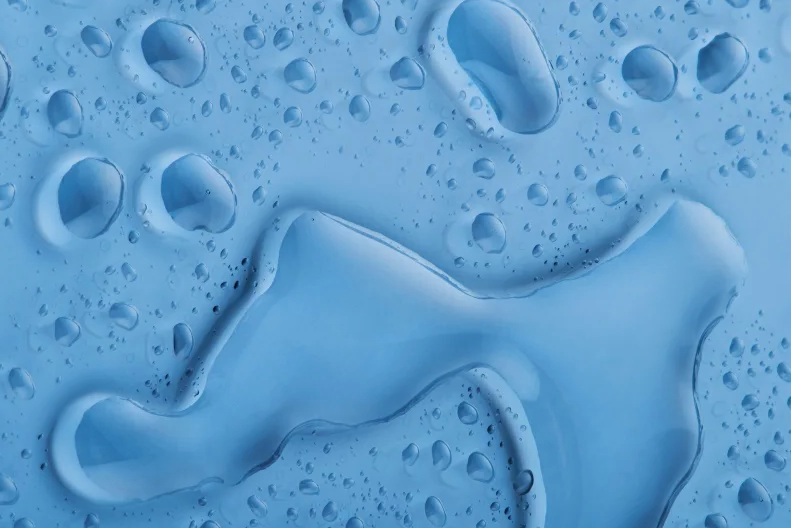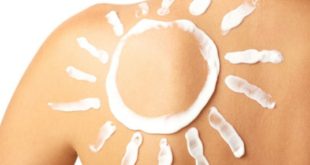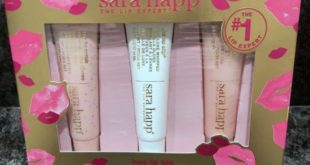
A streamlined skincare routine is all about little substitutions, where one product can do the work of several, and there’s no better skincare multitasker than niacinamide. Need an antioxidant, why not use niacinamide? When you want more moisturized skin, use niacinamide! Smoother texture? Niacinamide!
We know the skin-friendly B vitamin derivative can effectively pass through the outer, protective layer of skin, meaning you get good results with relatively low concentrations (2 to 5-percent is average in most clinicals). Plus, it comes with very few adverse side effects, so even those with sensitive skin needn’t worry. Those two reasons alone are enough to explain why niacinamide seems to be included in every Tom, Dick, and Harry’s skincare product nowadays—but frankly, niacinamide’s resumé is so long we often don’t make it past the first page. All modesty aside, one little molecule can actually fulfill a lot of your skincare routine’s essential functions. It’s never a perfect one-to-one substitution, but in lots of cases you might find yourself preferring niacinamide’s results over one of its predecessor’s. Looking to put your routine on a skincare diet? Here’s what you can swap out:
Antioxidant Serum
Antioxidants protect your skin from environmental stressors like pollution, UV, and high-energy visible (HEV) light, which can lead to hyperpigmentation and skin laxity. But even vitamin C, the most widely used antioxidant, comes with its challenges. L-ascorbic acid, for instance, goes bad easily and is highly unstable unless it’s formulated with a pH around 3.5, which could give you some unwanted peeling. (For reference, that’s a similar pH to glycolic acid.) Niacinamide isn’t an antioxidant, but scientists theorize upon topical application that it helps jumpstart your body’s production of niacinamide adenosine dinucleotide (NAD) and niacinamide adenosine dinucleotide phosphate (NADP), which are antioxidants. As a 2010 review in the Journal of Clinical and Aesthetic Dermatology notes, the antioxidizing power of niacinamide is the most well-studied way it can prevent against visible signs of aging. And, like vitamin C, niacinamide can also help lighten dark marks, at pretty low concentrations to boot. One 2011 study found that 4-percent niacinamide can yield similar results as treatment with hydroquinone (though niacinamide took two months to work, and hydroquinone needed only one). If you are looking to gently even pigmentation while you protect against free radicals, niacinamide can be easier on skin—and a lot more stable—than other antioxidants on the market. It can even survive storage for six weeks at over 100 degrees Fahrenheit without significantly breaking down.
Face Oil
Face oil gives your skin a glowing sheen—but that’s not actually why it can be beneficial in a skincare routine. Sebum, your skin’s very own face oil, is full of helpful fats to protect your skin from the elements and help it retain moisture. A healthy moisture barrier means less redness and reactivity. And a good face oil can be part of the solution, because like sebum, it fortifies your epidermal barrier. If you’re averse to face oils, or prefer to skip that step in the summertime, don’t despair! You should know they’re not the only way to lend some extra support where your face needs it most.
Niacinamide isn’t a lipid (or even oil-based!), but it does stimulate your skin’s production of them. Several studies have shown that application of topical niacinamide leads to an increase in ceramides, which is important, because they make up 50-percent of your skin’s moisture barrier. And this study shows an additional 230-percent increase in fatty acids and 150-percent increase in cholesterol. Sebum helps supply these things to your skin topically, but ceramides, cholesterol, and fatty acids also live in the top layer of your skin called the stratum corneum. That’s why it’s possible for niacinamide to increase barrier lipids and help decrease the level of sebum on your skin too. You’re fortifying your skin from the inside, so you don’t have to compromise shine for strength.
Antibiotic Cream
Topical clindamycin is a derm-prescribed staple for reducing acne. It works because it’s an antibiotic—clindamycin kills the bad bacteria that causes breakouts, and also serves as an anti-inflammatory to soothe the zits you already have.
Niacinamide isn’t an antibiotic, but interestingly, a couple studies have shown that niacinamide might work just as well as prescribed clindamycin, without the fear of antibiotic resistance over prolonged periods of use. First of all, it’s similarly anti-inflammatory—over the years, researchers have noticed benefits including improved wound healing and a decrease in redness. But here’s where things get really interesting! In a 1995 study that took place over eight weeks of treatments, 82-percent of patients who used niacinamide gel experienced an improvement in breakouts, compared to 68-percent of clindamycin users. And in 2013, researchers found incredibly similar results when comparing niacinamide and clindamycin’s effectiveness—though niacinamide was found to be more effective on oily skin, and clindamycin on dry skin. If you have oily skin, it might be beneficial to try a niacinamide treatment (the two cited studies used a 4-percent concentration) before seeking out topical antibiotics.
Glycolic Acid
Glycolic acid is one of a handful of alpha hydroxy acids (AHAs), which work on the skin’s surface to smooth texture. They do that through a process of exfoliation, dissolving the bonds between built-up dead cells so you can easily slough them off.
Niacinamide isn’t an AHA, but it kind of…works like one? A 2004 study used a special tool (it’s called a spectrophotometer, if you’re interested) to demonstrate smoothed out skin after treatment with just 2.5-percent niacinamide. And another trial bumped up the concentration to 3.5, and noted a 15-percent reduction in roughness after a month of use. Like glycolic acid, topical niacinamide can also pump up fine lines by stimulating protein production. A randomized, double-blind split-face trial showed a significant improvement in fine lines with 5-percent niacinamide, and more in vitro trials offer promising support. Your results certainly won’t be as dramatic as those observed with glycolic acid—one “expert grader,” whatever that means, noted that glycolic gave a better reduction in texture by 50 more percentage points when compared to niacinamide. But if you’re sensitive to acids or are in the sun a lot (all AHAs can be sun-sensitizing), niacinamide is a great place to start.
—Ali Oshinsky
Shop ITG’s favorite niacinamide products:
Photo via ITG



